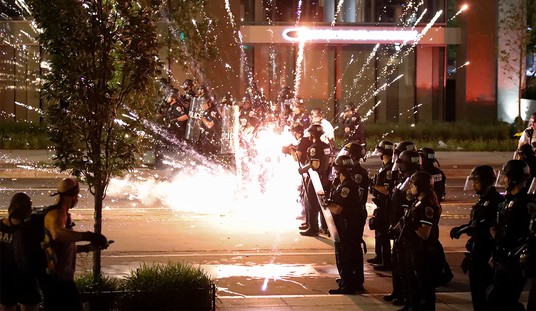To cleanse the palate, the most compelling thing you’ll see today unless Trump starts tweeting about CNN again. The main question I have is how this ended up on the History Channel. Is there a Hitler or “ancient aliens” angle to the Earhart story I’m not familiar with?
This recent Japan Times story on the 80th anniversary of her disappearance runs through all of the major theories about where she landed. Elderly people in the Marshall Islands have claimed for years that a plane crashed there when they were younger:
“Talk had turned to the war relics that can be found in the lagoons there,” explains [investigator Dick] Spink. “And as we talked, I said, ‘Didn’t Amelia Earhart disappear in this part of the world?’ and an old guy at the end of the table replied, ‘Yeah, she landed on our island; my uncle watched her for two days.’ I started laughing, but nobody else did.”
On subsequent visits, Spink began to document the stories of some of the Marshall Islands’ elderly residents, many of whom shared a thrillingly common tale: Two local fishermen, named Lajuan and Jororo, had been casting their nets when out of the blue a plane descended and landed on a nearby reef…
Earhart and Noonan were … taken to Jaluit Atoll, then known as Nanyo, a mandated territory of Japan, where they were ushered aboard a tramp steamer called the Koshu Maru and transported to Saipan, the Electra towed behind on the barge, Spink adds.
Jaluit Atoll is where the photo was taken, precisely matching Spink’s account. But there’s a wrinkle: Spink mentions the existence of the photo (which was discovered in 2012) to the reporter, making it unclear whether he got his information about Jaluit Atoll from eyewitnesses, independently corroborating the photograph, or if the photograph itself is the source of his belief that Earhart ended up there.
An obvious unanswered question: If the government had evidence of Earhart’s whereabouts so soon after she disappeared, why didn’t they publish it? One theory is that they might not have recognized her and navigator Fred Noonan in the photo they had, but that defies belief. The feds launched a massive search operation for Earhart; any contemporaneous spy photos from the Marshall Islands would have been scrutinized for evidence. The probable explanation is that they didn’t want to risk war with Japan in 1937 by making Earhart’s fate a flashpoint. If the government revealed that Japan was holding her — and, worse, had executed her — Americans would have been outraged and relations between the countries would have deteriorated. The feds could have revealed her fate after Pearl Harbor, but then questions inevitably would have been asked about how long the government had known what happened and whether they had tried to free her. And then, after the war, it benefited no one to reveal Earhart’s fate. The U.S. occupation of Japan was too fragile to risk upsetting it by revisiting unpleasant old business between the two countries. There was never a good time to reveal what had happened.
…Or was there? It wouldn’t have been hard for Roosevelt’s administration to lie to the papers in 1942 and claim that “new evidence” had come to light proving that Earhart had been captured and killed by the Japanese. The photo could have been released with a backstory claiming that it was taken by Japanese intelligence and had been smuggled out of Japan by U.S. spies. It would have been a useful extra motivator for the war effort. Why didn’t they do it?








Join the conversation as a VIP Member